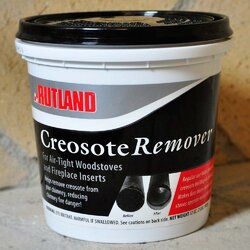K
katwillny
Guest
Hey all,
Spent about 30 minutes cleaning the stove and the stove pipe using the SootEater. I was pleasantly surprised to see that I have very little creosote on that pipe. After everything was said and done I had less than a cup of creosote. Just above the half mark. Took out the internal 4 feet of pipe to clean out the re-seat it. Sealed it with stove-fireplace cement-mortar. The weather was perfect for it as it was about 50 and sunny.
Spent about 30 minutes cleaning the stove and the stove pipe using the SootEater. I was pleasantly surprised to see that I have very little creosote on that pipe. After everything was said and done I had less than a cup of creosote. Just above the half mark. Took out the internal 4 feet of pipe to clean out the re-seat it. Sealed it with stove-fireplace cement-mortar. The weather was perfect for it as it was about 50 and sunny.


 , I am not in a position to do my own sweeping
, I am not in a position to do my own sweeping But I did have a sweep out today so I could see how I am burning since the installation in May. It looked like about a cup or two of creosote--most was dusty/crunchy, one or two little pieces were shiny. No sticky. This is from about 17 feet of pipe (from the box to the cap). Does that sound reasonable for several break in fires, a few weeks of "shoulder" fires and two months of 24/7. He said I should be set until the end of the burning season or the beginning of next season. Would love feedback on this. ALSO, he suggested I get some thing I can spray on the wood to prevent creosote. Anyone know anything about this. Thanks for any advice. So much to learn.
But I did have a sweep out today so I could see how I am burning since the installation in May. It looked like about a cup or two of creosote--most was dusty/crunchy, one or two little pieces were shiny. No sticky. This is from about 17 feet of pipe (from the box to the cap). Does that sound reasonable for several break in fires, a few weeks of "shoulder" fires and two months of 24/7. He said I should be set until the end of the burning season or the beginning of next season. Would love feedback on this. ALSO, he suggested I get some thing I can spray on the wood to prevent creosote. Anyone know anything about this. Thanks for any advice. So much to learn.
